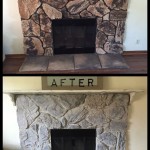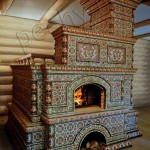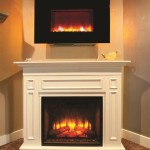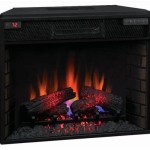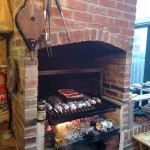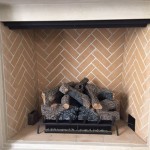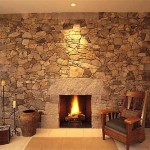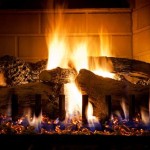Outdoor Fireplace Kits For Decks: Enhancing Your Outdoor Living Space
An outdoor fireplace can transform a deck into a focal point for relaxation, entertainment, and social gatherings. While custom-built fireplaces offer unique designs, outdoor fireplace kits present a cost-effective and convenient alternative for homeowners seeking to add warmth and ambiance to their outdoor living spaces. These kits contain pre-fabricated components designed for relatively easy assembly, offering a streamlined approach to creating a functional and aesthetically pleasing outdoor fireplace on a deck.
The selection of an appropriate outdoor fireplace kit for a deck requires careful consideration of several factors, including deck construction, local building codes, material options, design aesthetics, and the desired functionality. A thorough understanding of these aspects ensures the chosen fireplace kit is safe, compliant, and complements the existing outdoor environment.
Understanding Deck Structure and Weight Considerations
One of the paramount considerations when installing an outdoor fireplace kit on a deck is the deck's structural integrity. Decks are typically designed to support specific weight loads, and a fireplace, even in kit form, can impose a significant concentrated load. It is crucial to determine whether the existing deck can safely support the weight of the fireplace kit, including the weight of the materials themselves, plus the weight of any fuel (wood, gas, etc.), and any people who may be gathered around it. Consulting with a structural engineer or qualified contractor is highly recommended to assess the deck's load-bearing capacity and determine if any reinforcement is required.
Factors influencing deck structural integrity include the size and spacing of the deck joists, the type of wood used, the support posts' size and placement, and the overall condition of the decking materials. A deck built to older building codes or showing signs of deterioration may require significant reinforcement before a fireplace kit can be safely installed. Reinforcement may involve adding additional joists, strengthening existing joists, or adding more support posts beneath the deck. Some fireplace kit manufacturers provide weight specifications and load distribution guidelines to assist in this assessment.
Weight distribution is also a critical aspect. Some fireplace kits are designed to distribute weight more evenly across the deck surface. Opting for a lighter-weight kit or one with a wider base can help minimize the concentrated load on a specific area of the deck. It may also be possible to redistribute the fireplace's weight by strategically placing it near load-bearing points of the deck structure.
Material Selection and Durability
Outdoor fireplace kits are available in various materials, each offering unique aesthetic qualities, durability characteristics, and maintenance requirements. Common materials include concrete, brick, stone veneer, and metal. The selection of material should align with the desired style of the outdoor space, the local climate, and the homeowner's maintenance preferences.
Concrete fireplace kits are a popular choice due to their affordability, versatility, and durability. They can be molded into various shapes and textures, and can be stained or painted to match the existing deck décor. Concrete is also relatively resistant to heat and weathering, making it suitable for outdoor use. However, concrete is porous and may require sealing to prevent water absorption and cracking, especially in colder climates.
Brick fireplace kits offer a classic and timeless aesthetic. Brick is a durable and fire-resistant material that can withstand extreme temperatures. However, brick fireplace kits can be heavier and more expensive than concrete kits. Mortar joints between bricks require periodic maintenance to prevent water penetration and erosion.
Stone veneer fireplace kits provide the appearance of natural stone at a lower cost and weight than solid stone. Stone veneer is typically attached to a concrete or metal frame. These kits offer a wide variety of stone types and colors to choose from, allowing homeowners to create a custom look. However, the quality of stone veneer can vary, so it is important to select a reputable manufacturer with high-quality materials.
Metal fireplace kits, often constructed from steel or aluminum, offer a modern and sleek aesthetic. Metal is lightweight and relatively easy to assemble. Metal fireplace kits are often designed for use with gas or propane fuel. However, metal can rust or corrode over time, especially in coastal environments. Powder coating or other protective finishes can help extend the lifespan of metal fireplace kits.
Safety Considerations and Building Codes
Safety is paramount when installing an outdoor fireplace on a deck. Fireplace kits must be installed in compliance with all applicable local building codes and regulations. These codes often specify minimum clearances from combustible materials, such as wooden railings, siding, and overhanging roofs. It is essential to obtain the necessary permits and inspections before installing a fireplace kit to ensure compliance and prevent potential fire hazards.
One critical safety aspect is the clearance to combustibles. Building codes typically require a minimum distance between the fireplace and any nearby combustible materials. This distance varies depending on the type of fuel used (wood, gas, propane) and the fireplace's design. Manufacturers typically provide clearance specifications with their kits. Adequate clearance helps prevent accidental fires and protects the surrounding structures from heat damage.
Another safety consideration is the use of a spark arrestor. Spark arrestors are screens or mesh devices that prevent embers and sparks from escaping the fireplace and potentially igniting nearby vegetation or structures. Spark arrestors are particularly important in areas prone to wildfires. Building codes often require the use of spark arrestors on wood-burning fireplaces.
Proper ventilation is also essential for safe fireplace operation. Wood-burning fireplaces require adequate airflow to burn efficiently and prevent the buildup of carbon monoxide. Gas or propane fireplaces should be installed with proper venting to exhaust combustion gases safely. Improper ventilation can lead to carbon monoxide poisoning, a serious health hazard.
Furthermore, it is important to consider the placement of the fireplace relative to prevailing winds. Placing the fireplace in an area exposed to strong winds can cause smoke and embers to be blown onto the deck or into nearby homes. Shielding the fireplace from wind can improve its performance and reduce the risk of fire hazards.
Choosing the Right Kit and Installation Process
Selecting the right outdoor fireplace kit involves considering several factors, including the desired size, style, fuel type (wood, gas, propane), and budget. It is important to research different manufacturers and models to find a kit that meets the homeowner's specific needs and preferences. Reading reviews and comparing specifications can help in making an informed decision.
The installation process for outdoor fireplace kits typically involves assembling pre-fabricated components according to the manufacturer's instructions. Most kits come with detailed instructions and diagrams to guide the installation process. However, some kits may require specialized tools or skills, such as concrete mixing, cutting, or welding. If the homeowner is not comfortable with these tasks, it is best to hire a qualified contractor to perform the installation.
Before beginning the installation, it is important to prepare the deck surface. This may involve leveling the area where the fireplace will be placed, adding a concrete pad for extra support, or reinforcing the deck structure. It is also important to ensure that all necessary utilities, such as gas or propane lines, are properly installed and connected.
During the installation process, it is crucial to follow the manufacturer's instructions carefully. Improper assembly can compromise the fireplace's structural integrity and safety. It is also important to use the correct tools and materials, and to double-check all connections and fasteners. Once the fireplace is assembled, it should be inspected by a qualified professional to ensure that it is installed correctly and safely.
After the installation is complete, it is important to perform regular maintenance to keep the fireplace in good working order. This may involve cleaning the firebox, inspecting the chimney or vent, and repairing any cracks or damage. Regular maintenance can help extend the lifespan of the fireplace and prevent potential safety hazards.
Design Considerations and Aesthetic Integration
An outdoor fireplace should not only be functional but also aesthetically pleasing, seamlessly integrating with the existing deck design and overall outdoor environment. Considerations should be given to the style of the fireplace, its size and proportion relative to the deck, and the surrounding landscaping.
The style of the fireplace should complement the architectural style of the house and the existing deck décor. A modern fireplace with clean lines and minimalist design may be suitable for a contemporary home, while a rustic stone fireplace may be more appropriate for a traditional home. Choosing a fireplace style that harmonizes with the surrounding environment creates a cohesive and visually appealing outdoor space.
The size and proportion of the fireplace are also important considerations. A fireplace that is too large can overwhelm the deck, while a fireplace that is too small may not provide adequate warmth or visual impact. It is important to choose a fireplace that is appropriately sized for the deck and the intended use. Consider the seating arrangement and the overall scale of the outdoor space when selecting the fireplace size.
Landscaping can play a significant role in integrating the fireplace into the outdoor environment. Planting trees, shrubs, and flowers around the fireplace can create a natural and inviting atmosphere. Adding a seating area with comfortable furniture and decorative accessories can transform the deck into a relaxing and enjoyable outdoor living space. Consider the color palette and textures of the surrounding landscaping when selecting the fireplace materials and finishes.
Lighting is another important element to consider. Adding outdoor lighting around the fireplace can enhance its ambiance and create a warm and inviting atmosphere. String lights, lanterns, or spotlights can be used to illuminate the fireplace and the surrounding area. Consider the type of lighting and its placement to create the desired mood and effect.
In summary, selecting and installing an outdoor fireplace kit on a deck requires careful planning and consideration. By addressing the structural, safety, material, and aesthetic aspects, homeowners can create a beautiful and functional outdoor living space that enhances their home's value and enjoyment.

Outdoor Fireplace Kits Masonry Stone

Diy Outdoor Fireplace Kit Fremont Makes Hardscaping And Easy

Outdoor Fireplace Kits Masonry Stone

Discover Customizable And Affordable Fireplace Kits

Outdoor Fireplace Kits Stonewood S Cape Cod Ma Nh Ct

Outdoor Fireplace Kits Masonry Stone

Diy Outdoor Fireplace Ideas

Outdoor Fireplace Kits Stonewood S Cape Cod Ma Nh Ct

How To Build An Outdoor Fireplace Step By Guide Buildwithroman

Outdoor Fireplace Kits Southwest Stone Supply

